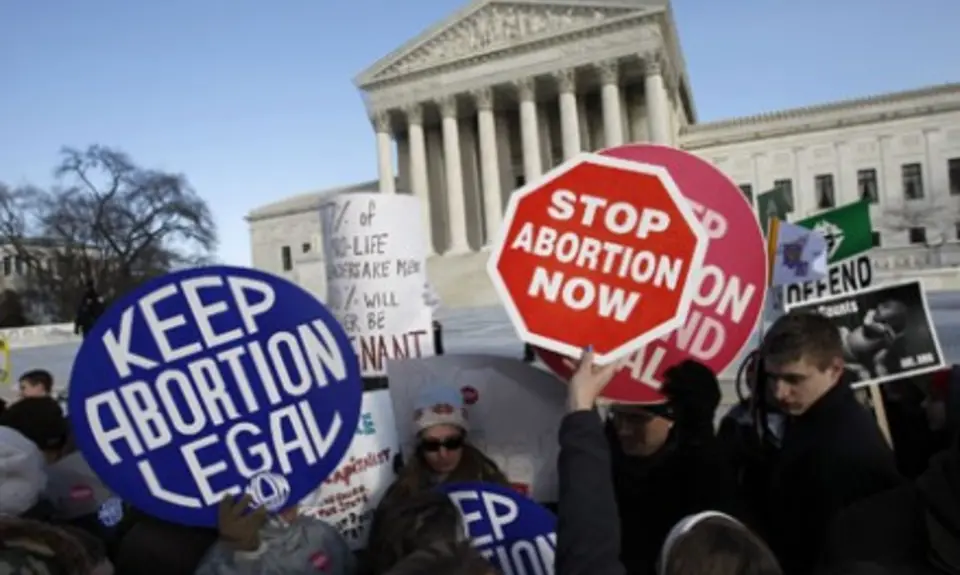As early as 1990, attorney Walter Dellinger, who went on to serve in the Clinton administration, was warning that the emerging strategy of setting up obstacles to abortion access would push women to obtain abortions later in their pregnancies, a more expensive and less safe procedure. These supposed “compromise” measures, he noted, were at the same time sometimes coupled with calls to cut off legal abortion during the second trimester of pregnancy. Dellinger wrote in The American Prospect:
To enact in the United States laws that simply prohibit abortions after twelve or eighteen weeks would constitute a strange and cruel response to the issue of late abortions. In this country, legislative deadlines for abortion would co-exist with access regulations designed to prevent women from being able to meet the deadline. No state truly concerned about either the increased maternal health risks or the moral implications of late abortions should consider the coercive step of prohibiting second trimester abortions while simultaneously pursuing policies that cause abortion to be delayed. … Bans on funding for abortions, shutting off access to public hospitals, parental consent/ judicial bypass laws, and testing requirements all fall into this category. Legislators who are troubled in principle by late abortions should support instead measures ensuring that every woman who wants to terminate a pregnancy can do so as early and as safely as possible.
Fast forward to late last year, when a study showed that exactly that had happened after Texas implemented its restrictive new law:
A new report released by the Texas Policy Evaluation Project — a research group based at the University of Texas at Austin that’s been tracking the state’s reproductive health policy over the past four years — finds that recent clinic shutdowns have greatly limited access to timely abortions statewide. In some cases, women had to wait nearly a month to be seen. In others, clinics had to turn women away, since they had no available appointment slots open.
As wait time to get an abortion increases, the estimated proportion of abortions performed in the second trimester increases. These later surgical abortions, although safe, are associated with a higher risk of complications and are significantly more costly to women than an earlier medical abortion. And even staunch abortion opponents are more opposed to late-term abortions compared to earlier procedures, citing the scientifically disputed theory that fetuses can feel pain after 20 weeks gestation.
At today’s arguments in Whole Women’s health, Justice Anthony Kennedy hinted at this issue, according to the Wall Street Journal’s early reports:
Justice Kennedy ends the string of questions from the women justices.
He notes that drug-induced abortions are up nationwide, but down in Texas, where the number of surgical abortions is up since the state enacted its law. He wondered whether such an impact was “medically wise.”
Justice Ruth Bader Ginsburg similarly called out Texas’ solicitor general for undermining his own claim that the state’s regulations were meant to protect women’s health:
Justice Ginsburg asks: How many women will be located more than 100 miles from a clinic? Mr. Keller makes reference to a 25% number, but says that number is high because it doesn’t take into account some women close to clinics in New Mexico.
That’s odd, Justice Ginsburg says. She wonders why Texas would consider those New Mexico clinics an option, given that they wouldn’t meet the standards set forth in the state law. If your argument is right, New Mexico is “not a way out” for Texas, the justice tells Mr. Keller.
Even as the anti-choice movement is pushing restrictive regulations that, as the Texas study showed, drive women to seek abortions later in their pregnancy, it is championing measures at the state and federal level that would cut off legal abortion at 20 weeks of pregnancy, partway through the second trimester.
Of course, the anti-choice movement is focusing on these two strategies because they believe they can pass muster in the courts and in public opinion in a way that the ultimate goal — an outright ban on abortion — would not. But what is left is not a regime that protects women’s health, as proponents of Texas’ law claim, but one that makes it increasingly difficult, if not impossible, for women to obtain an abortion, which has been their ultimate goal all along.
